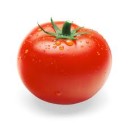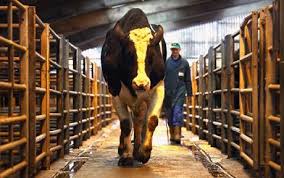Food production: The environmental take

One of the columns in The Washington Post Food section is titled UNEARTHED. It’s written by long-time food and health freelancer Tamar Haspel. Her article the other day certainly called my attention: “Which is worst for the environment?”
 Pictured at the top of the column is a floret of broccoli, a salmon fillet, 2 cuts of pork loin and a whole chicken. Article sub-title is: “Why comparing the impact of raising meat vs. produce is really an apples-oranges affair.” Maybe you saw it?
Pictured at the top of the column is a floret of broccoli, a salmon fillet, 2 cuts of pork loin and a whole chicken. Article sub-title is: “Why comparing the impact of raising meat vs. produce is really an apples-oranges affair.” Maybe you saw it?
From the piece is something I’ve wanted to know more about: “If we feed plants to animals, and then eat animals, we use more resources and produce more greenhouse gases than if we simply eat the plant.” Yeah, I can appreciate that.
But here’s the kicker: “As with most arguments about our food supply, though, it’s not that simple.”
To find out why Haspel thinks it’s not that simple, see the article linked here.
In a short series of teasers, let me call out for you some of the article that I found so, may I say, juicy?
 First up: “One cow’s annual output of methane–about 100 kilograms–is equivalent to the emissions generated by a car burning 235 gallons of gasoline.” Whoa! Who would have known? One cow.
First up: “One cow’s annual output of methane–about 100 kilograms–is equivalent to the emissions generated by a car burning 235 gallons of gasoline.” Whoa! Who would have known? One cow.
Do you know that methane, a component of greenhouse gas emissions, is 21 times more effective at preventing infrared radiation from escaping the planet than is CO2?! (This is per the U.S. EPA Global Warming Potential, a statistic that measures the relative harmfulness of GHG emission components.)
Returning to the teasers, another one is the issue of fertility. “Cows can have one calf per year, which means the carbon cost of every cow destined for beef includes the cost of maintaining an adult for a year. Pigs, by contrast, can have two litters a year, with 10 or more pigs per litter.”
What about feed, you might wonder? According to Haspel, “it takes six pounds of feed to make one pound of beef, but only 3.5 pounds for pork and two pounds for chicken.
Taken all together: “Considering the methane, the babies and the feed, it’s clear that the ruminants [such as cows and sheep] do more damage than their one-stomached barnyard compatriots (monogastrics, they’re called),” such as pigs and chickens.
May I suggest you find the time to read the whole piece? It’s loaded with useful information.
Besides viewing a very handy table ranking foods by emissions per kilogram, you’ll learn how calories enter the calculus. Haspel provides side-by-side with emissions/kilogram another table of foods ranked by emissions per 1,000 calories. These illustrated tables were developed 2 years ago by the non-profit Environmental Working Group. (The EWG’s evaluative work on actual or potentially harmful chemicals in commonly available cleaning products has helped inform eco-friendly cleaning products selected for St. Margaret’s.)
Example–while turkey ranks lower in emissions/kilogram of CO2 equivalent than does farmed salmon, it ranks higher than farmed salmon in emissions/1,000 calories.
Next time looking into your pantry, try to find some peanut butter on hand. For emissions/kilogram and emissions/1,000 calories, it’s a very eco-benign food. But you already knew that. Intuitively, at least.
it’s a very eco-benign food. But you already knew that. Intuitively, at least.
P.S. Ate a steak last night which provided calories sufficient to recover from a day of strenuous physical activity. That said, I continue to be mindful of the environmental costs of some of my food choices.